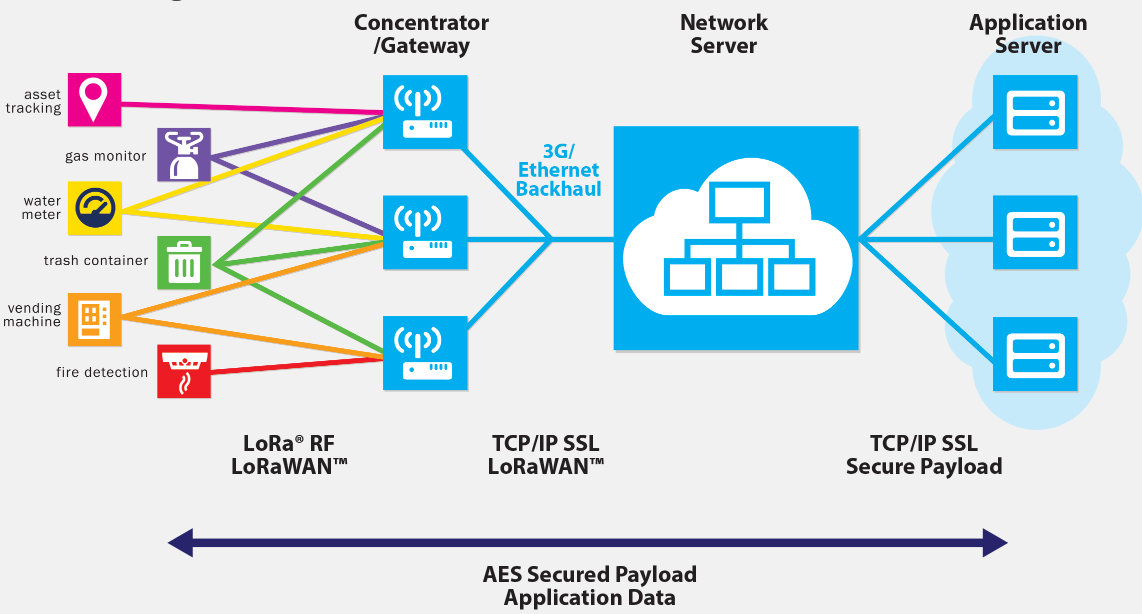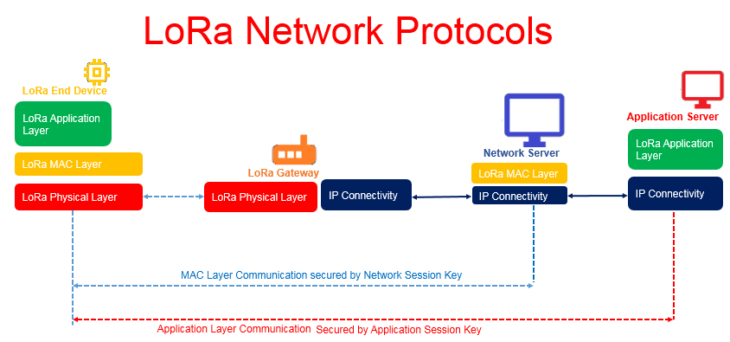LoRa Technology, It’s Features and Application
LoRa is Long Range ,low data rate, low power wireless platform technology for building IoT network. LoRa technology is owned by a chip company – Semtech, who acquired it from another French startup – Cycleo. Semtech has formed the LoRa Alliance, which develops global standards and makes this available under a royalty free license to its members.
Semtech builds LoRa Technology into its chipsets. These chipsets are then built into the products offered by our vast network of IoT partners and integrated into LPWANs from mobile network operators worldwide.
LoRa Features
- Geo-Location: It enables GPS-free, low power tracking technology
- Low Cost: Reduces costs three ways: infrastructure investment, operating expenses and end-node sensors, A LoRa base station cost a few hundred dollars and set themselves up with a network. It easy to plug into the existing infrastructure and offers a solution to serve battery-operated IoT applications
- Standardization: LoRa Alliance develops global standards and improved global inter-operability speeds adoption and roll out of LoRaWAN-based networks and IoT applications
- Low Power: Its protocol designed specifically for low power consumption extending battery lifetime up to 20 years
- Long Range: Single base station of LoRa provides deep penetration in dense urban/indoor regions, plus connects rural areas up to 30 miles away
- High Capacity: It supports millions of messages per base station, ideal for public network operators serving many customers
- Secure: Embedded end-to-end AES-128 encryption mechanism
- Low connection cost : LoRa Technology operates in the unlicensed ISM band, which means no or very low spectrum costs (there may be a very low connection fee if using an external service provider)
LoRaWAN Protocol
LoRaWAN is a protocol specification built on top of the LoRa technology developed by the LoRa Alliance. It uses unlicensed radio spectrum in the Industrial, Scientific and Medical (ISM) bands to enable low power, wide area communication between remote sensors and gateways connected to the network. This standards-based approach to building a LPWAN allows for quick set up of public or private IoT networks anywhere using hardware and software that is bi-directionally secure, interoperable and mobile, provides accurate localization, and works the way you expect. Its protocol stack is shown below
LoRa Network
LoRa network is consist of gateways, network servers and End devices. The network topology used is star of stars. End devices are also known as motes and gateways are known as base stations or concentrators in LoRa network system. End devices and Gateways are connected wirelessly using ISM bands specified with single hop.Gateways and network servers are connected using IP back-haul or 3G/4G broadband connections.
LoRa Operational Specifications
| Specification | LoRa Support |
|---|---|
| Cell Range | Urban 2-5 Km , Rural 15-20 Km |
| Frequency Band | ISM Bands: 433 MHz/868 MHz/780 MHz/915 MHz |
| IEEE Standard | IEEE 802.15.4g |
| Cell Capacity | One LoRa cell can support 100K device |
| Standard Availability | Specification available since June 2015, There are Live LoRa Networks in about 50+ Countries |
| Modulation | Spread Spectrum Modulation types is used with wideband linear FM pulses. Provice about 30 dB gain over FSK |
| Battery | About 20 Years battery life |
| LoRa Topology support | Star Topology |
| LoRa Physical Layer | Take cares of Power, Frequency,modulation and signaling between base station and devices |
LoRa Technology Application Landscape
- Air Pollution Monitoring
- Agriculture Processing
- Animal Tracking
- Fire Detection
- Fleet Tracking
- Home Security
- Indoor Air Quality
- Industrial Temperature Monitoring
- Assets Management
- Predictive Maintenance
- Radiation Leak Detection
- Smart Lighting
- Smart Parking
- Waste Management
- Water Flow Monitoring





